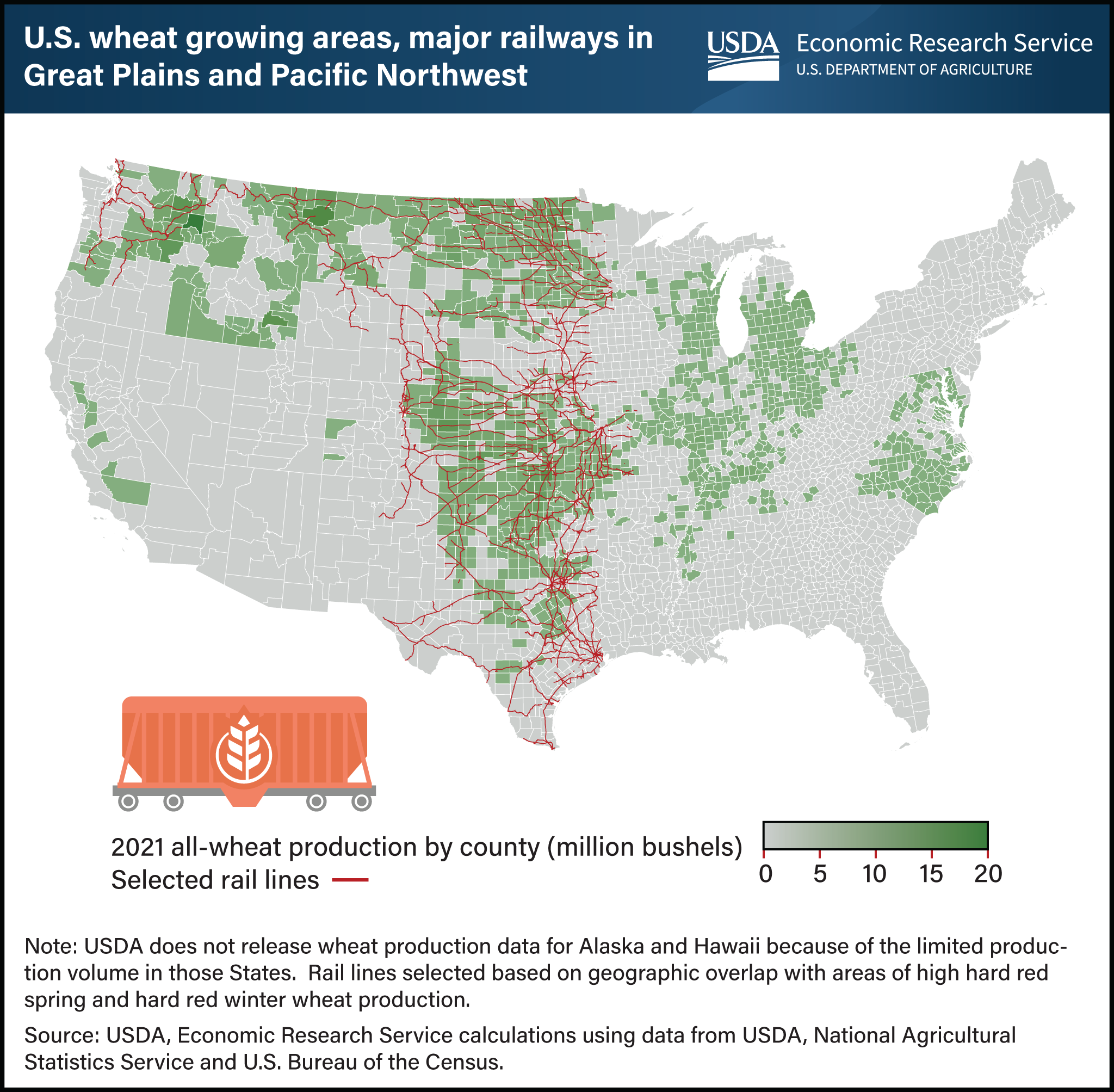Rail networks facilitate U.S. wheat exports by connecting production areas to coastal ports
- by Christine Sauer and Claire Hutchins
- 2/22/2023

About half of all wheat grown in the United States is exported, and geography largely determines the mode of transportation to ports. U.S. wheat production is heavily concentrated in the Great Plains and Northern Plains regions, which include Oklahoma, Kansas, South and North Dakota, and Montana. Wheat is also grown in the Midwest, parts of the Southeast, and the Pacific Northwest (PNW) regions, as well as California. The inland waterways of the Mississippi River and the Columbia-Snake River system enable exporters of soft red winter wheat and white wheat to use transportation by barge to move wheat to export facilities in the Gulf of Mexico and the PNW, respectively. In contrast, rail transportation dominates in the vast wheat-producing areas west of the Mississippi and east of the PNW. In this region, the long distances to ports and a lack of navigable waterways make freight transportation by truck or barge difficult or impossible. Producers of hard red spring wheat, which is primarily grown in the Northern Plains, are served by rail lines that run to Washington State and Oregon, providing easy access to ocean vessels that can transport wheat to markets in Asia and the rest of the world. Similarly, hard red winter (HRW) wheat production areas in the Central and Southern Plains are directly connected by rail to Mexico, the top import market for HRW. It is also shipped by rail from the Plains to export terminals in the Gulf of Mexico. From 2014 to 2019, about 50 to 60 percent of wheat exports were transported to port by rail. This chart first appeared in the USDA, Economic Research Service’s Wheat Outlook, published in December 2022.

